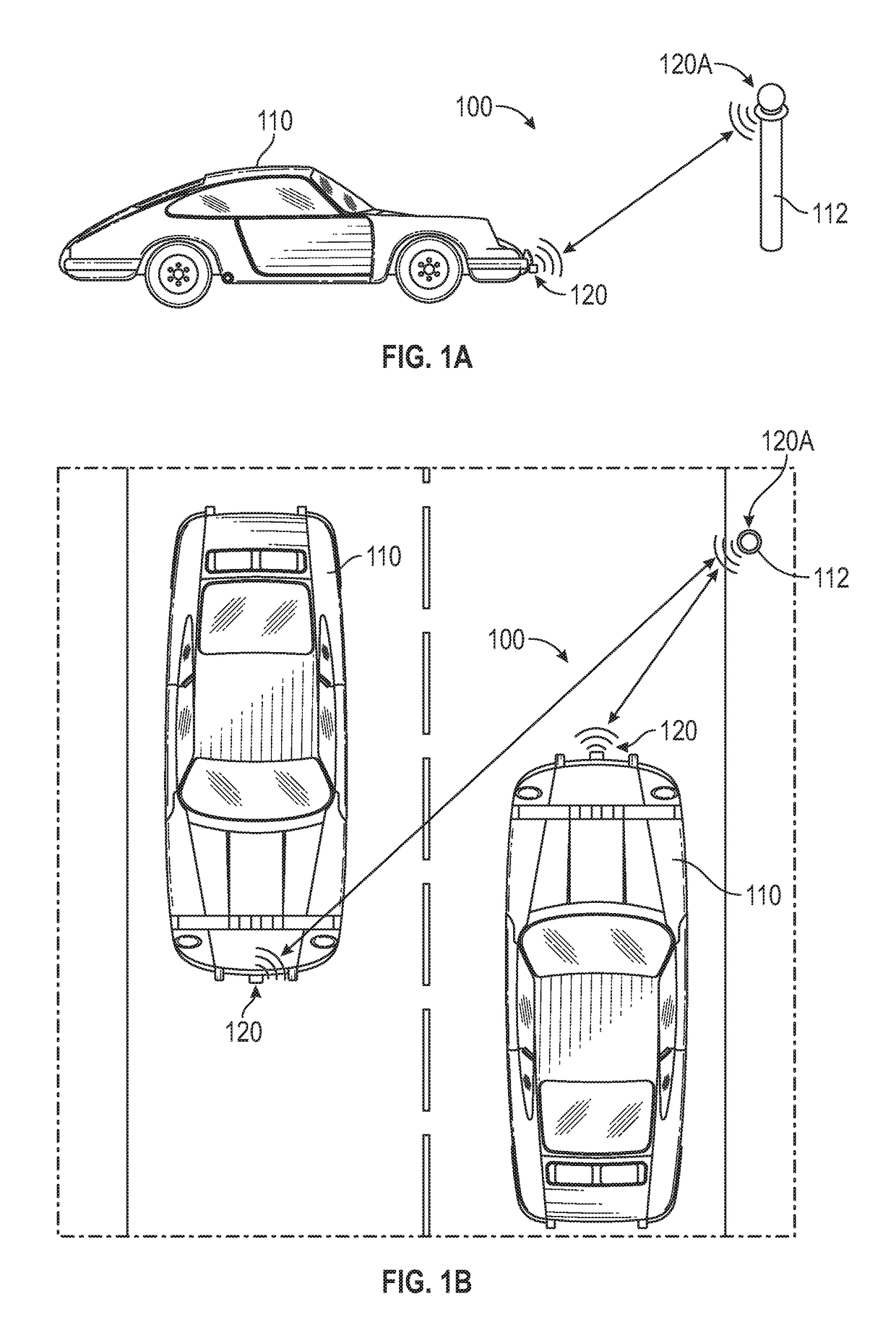Bi-directional beacon information system
- Summary
- Abstract
- Description
- Claims
- Application Information
AI Technical Summary
Benefits of technology
Problems solved by technology
Method used
Image
Examples
Embodiment Construction
[0025]Exemplary embodiments of a BBIS in accordance with the present invention are illustrated in FIGS. 1 and 2, and generally designated by reference numeral 100. As shown, an autonomous vehicle 110 is equipped with a BBIS beacon, general designated by reference numeral 120 and which preferably includes a transmitter 122 and a receiver 124, or alternatively a singular transceiver, for bi-directional communication. As illustrated in FIG. 4, the BBIS beacon system is in operational communication with a CAN Bus 130 disposed on the vehicle 110, which communicates with or includes a processor 132 handling autonomous operation of the vehicle 110 in combination with the vehicle's operating systems, GPS system, differential GPS system, and the like, generally represented as reference numeral 134.
[0026]Preferably, the BBIS beacon 120, which includes the transmitter 122 and receiver 124, is located on the vehicle 110 in a position where it can pick up transmissions from other beacons 120 wit...
PUM
 Login to View More
Login to View More Abstract
Description
Claims
Application Information
 Login to View More
Login to View More - R&D
- Intellectual Property
- Life Sciences
- Materials
- Tech Scout
- Unparalleled Data Quality
- Higher Quality Content
- 60% Fewer Hallucinations
Browse by: Latest US Patents, China's latest patents, Technical Efficacy Thesaurus, Application Domain, Technology Topic, Popular Technical Reports.
© 2025 PatSnap. All rights reserved.Legal|Privacy policy|Modern Slavery Act Transparency Statement|Sitemap|About US| Contact US: help@patsnap.com



